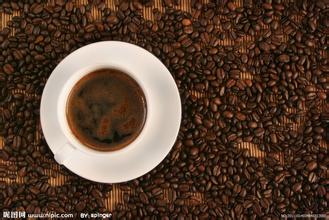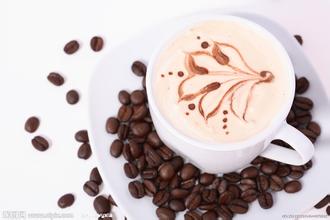El Salvador Coffee producing area introduces the IzaIco area of Sonsonate Province
Coffee was introduced to El Salvador from the Caribbean in 1742 (1740).
In the mid-19th century, El Salvador's original export pillar Indigo (Indigo, a dye) gradually declined due to the development of synthetic dyes in Europe, and coffee gradually became the main export product under the leadership of the government.
In 1856, the first 693 bags of coffee beans were shipped to Europe. Europe was El Salvador's leading coffee customer until World War II, when it was replaced by the United States.
In the 1970s, El Salvador produced a record 350,000 bags of coffee. As the civil war intensified, the coffee industry was in turmoil.
Coffee production in El Salvador was affected by domestic political instability, and the civil war was suspended after the parties signed a peace agreement in 1992. The coffee industry is beginning to recover.
Coffee production status
"Natural disasters" and "bad luck" are the words that describe the challenges facing El Salvador's coffee industry. Although it has escaped the shadow of war, El Salvador's coffee production still faces challenges from time to time, including: hurricane in 1998; earthquake in 2001; volcanic eruption in 2002; and leaf rust in 2012.
Despite these challenges, El Salvador has maintained a high coffee production, consistently ranking in the top 15 of ICO member countries for total coffee production between 2008 and 2012, according to ICO International Coffee Organization data. In 2013, affected by leaf rust disaster, 70% of farms in China were infected, and the yield dropped sharply by about 40%, ranking down to 16 coffee varieties.
The chaos caused by the civil war affected economic development, but ironically allowed the ancient coffee species to remain. The situation was too chaotic for Salvadoran coffee farmers to catch up with the trend of coffee variety renewal in Central and South America.
El Salvador produces 100% Arabica coffee, of which 68% is Bourbon (Coffea arabica var. Bourbon), 29% Pacas, the rest include Pacamara, Caturra, etc.
Pacas, first discovered in Salvador in 1949, is a natural hybrid of Bourbon and Catula.
Pacamara, an artificially selected variety of pacas and maragogipe (or maragogype), was first bred in 1958 (one said 1954). Pacamara is a rare excellent variety under artificial breeding. Green is better than blue. It perfectly inherits the advantages of the mother plant. It has the excellent taste of pacas and the big size of malagogipe. Pacamara species are thought to be the result of the pursuit of the larger Arabica species

Important Notice :
前街咖啡 FrontStreet Coffee has moved to new addredd:
FrontStreet Coffee Address: 315,Donghua East Road,GuangZhou
Tel:020 38364473
- Prev

The Development of Coffee producing areas in Costa Rica the central mountains and the western valleys
Coffee is an important economic source of Costa Rica. It was introduced in 1808 and has been cultivated for 200 years. Costa Rica has 1x3 population invested in newly developed villa sarchi, newly developed villa sarchi and coffee-related industries. Colombians say that coffee has changed the country and enjoyed a rich environment, and coffee has indeed made an outstanding contribution.
- Next

Introduction of Honduran coffee with rich and mellow taste
The granules of coffee beans in Honduras are large in shape, uniform in size and glossy in color. In order to facilitate harvesting, farmers will prune the coffee trees to no more than 150 centimeters, because if they grow too high, they have to set up ladders to pick, which is not only time-consuming, but also may damage the trees by bending branches. As the ripening period of each fruit of the coffee bean is different, it is necessary to keep the coffee bean in good condition.
Related
- Does Rose Summer choose Blue, Green or Red? Detailed explanation of Rose Summer Coffee plots and Classification in Panamanian Jade Manor
- What is the difference between the origin, producing area, processing plant, cooperative and manor of coffee beans?
- How fine does the espresso powder fit? how to grind the espresso?
- Sca coffee roasting degree color card coffee roasting degree 8 roasting color values what do you mean?
- The practice of lattes: how to make lattes at home
- Introduction to Indonesian Fine Coffee beans-- Java Coffee producing area of Indonesian Arabica Coffee
- How much will the flavor of light and medium roasted rose summer be expressed? What baking level is rose summer suitable for?
- Introduction to the characteristics of washing, sun-drying or wet-planing coffee commonly used in Mantenin, Indonesia
- Price characteristics of Arabica Coffee Bean Starbucks introduction to Manning Coffee Bean Taste producing area Variety Manor
- What is the authentic Yega flavor? What are the flavor characteristics of the really excellent Yejasuffi coffee beans?

